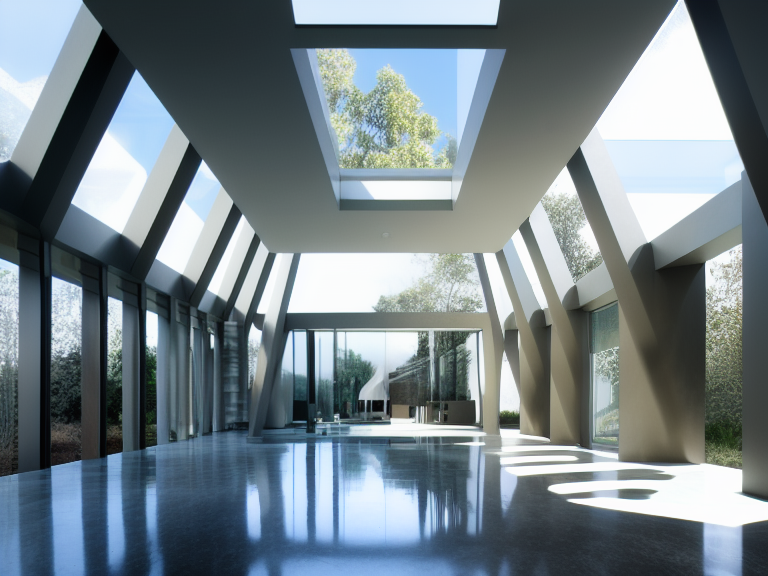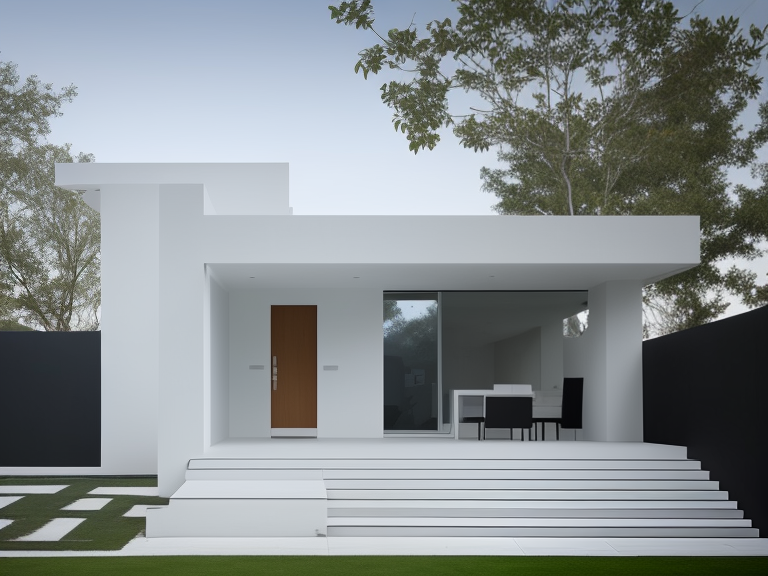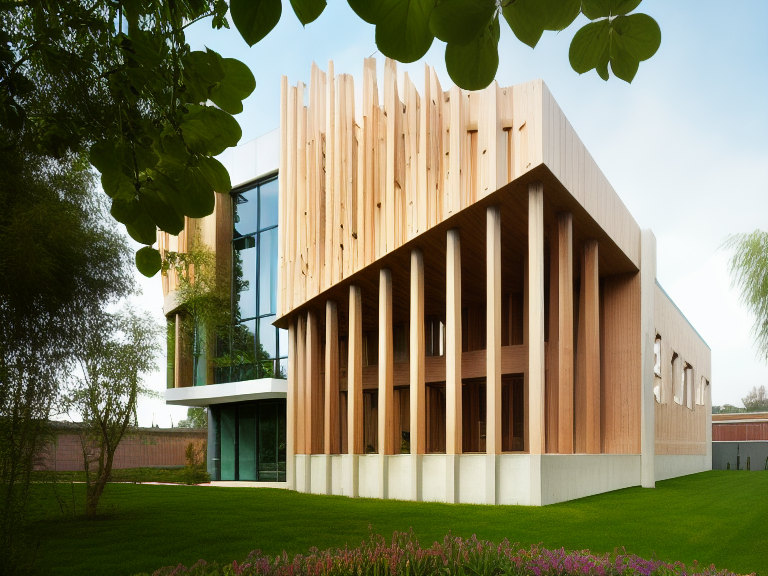Modern architecture is witnessing a profound shift, as mystical elements, inspired by sacred geometries, biomimicry, and celestial inspirations, are being woven into the fabric of buildings, transcending functionality to evoke emotions, inspire awe, and connect occupants with the divine. From sacred symbols to fractal patterns, architects are incorporating mystical elements to create immersive experiences that blur physical and metaphysical boundaries. As they explore mythic origins and cosmic inspirations, buildings become vessels for spiritual growth and self-discovery. Now, the boundaries of architecture are expanding, and the possibilities are endless – and it's just the beginning of this extraordinary journey.
Sacred Geometries in Modern Design
Incorporating sacred geometries, architects are revealing the secrets of a timeless, symbolic language. This emerging paradigm not only redefines the aesthetics of modern design but also taps into humanity's profound desire for connection and transcendence. By embracing geometric consciousness, architects are poised to create structures that not only inspire awe but also nurture the human spirit.
As geometric consciousness awakens, architects are compelled to redefine the boundaries of design. Sacred geometries, once relegated to ancient mysticism, now inform modern blueprints, imbuing spaces with an aura of mystique and sophistication. The deliberate use of geometric patterns and shapes evokes a visceral response, stirring the human experience and fostering a deeper connection with the environment. This synergy of form and function births a new wave of architectural innovation, where buildings are no longer mere structures, but vessels for spiritual exploration and growth.
Incorporating sacred geometries, architects are revealing the secrets of a timeless, symbolic language. This emerging paradigm not only redefines the aesthetics of modern design but also taps into humanity's profound desire for connection and transcendence. By embracing geometric consciousness, architects are poised to create structures that not only inspire awe but also nurture the human spirit.
Biomimicry and Organic Forms
As architects increasingly turn to nature for inspiration, biomimicry is emerging as a key driver of innovative structure designs. By emulating the intricate patterns and forms found in the natural world, designers are creating buildings that not only mimic the beauty of nature but also harness its efficiency. From self-cleaning façades to adaptive building skins, biomimicry is revealing new possibilities in modern architecture.
Natural Inspiration Sources
Drawing from the intricate patterns and structures found in nature, architects are turning to biomimicry and organic forms to inspire innovative designs that not only echo the beauty of the natural world but also provide sustainable solutions. This trend is driven by the desire to reconnect with nature and create spaces that promote well-being and harmony with the environment.
Some of the most enchanting natural inspiration sources include:
- Earth Tones: Warm, natural hues reminiscent of the forest floor, evoking feelings of comfort and serenity
- Forest Baths: Immersive experiences that bring the tranquility of the forest into urban spaces
- Wilderness Escapes: Remote, eco-friendly retreats that allow individuals to disconnect from the digital world and reconnect with nature
- Nature Escapism: Architectural designs that incorporate natural elements, such as living walls and green roofs, to create a sense of escapism
- Wild Landscapes: Unbridled, untamed spaces that celebrate the beauty of the natural world, free from human intervention
Innovative Structure Designs
By mimicking nature's intricate patterns and structures, architects are crafting innovative building designs that not only reduce environmental impact but also evoke a sense of wonder and connection to the natural world. Biomimicry and organic forms are revolutionizing modern architecture, yielding structures that blur the lines between nature and built environment. Curved silhouettes and dynamic frameworks are redefining urban skylines, while structural artistry is pushing the boundaries of what's possible. Urban canopies and floating columns are becoming iconic features of modern cities, providing shelter and shade while also creating a sense of community. Wave roofs and tensile structures are being used to create expansive, open spaces that seem to defy gravity. Meanwhile, folded façades are adding an extra layer of complexity and visual interest to building exteriors. As architects continue to draw inspiration from nature, we can expect to see even more innovative and sustainable designs that not only reduce environmental impact but also inspire and uplift.
Fractal Patterns in Architecture
As architects incorporate fractal patterns into their designs, they're able to create structures that exude geometric harmony. By mirroring the intricate patterns found in nature, these buildings take on organic forms that feel both futuristic and timeless. Through the use of mathematical principles, architects can distill the beauty of fractals into visually stunning and thought-provoking structures.
Geometric Harmony in Design
In modern architectural designs, geometric harmony is being achieved through the incorporation of fractal patterns, which create visually striking and harmonious structures that resonate with the human experience. Fractals, with their self-replicating patterns, bring a sense of balance and cohesion to buildings, fostering a connection between the structure and its occupants.
By incorporating fractal patterns, architects can achieve:
- Spatial Balance: Fractals create a sense of balance and harmony, guiding the viewer's eye through the structure.
- Visual Flow: Fractal patterns create a sense of movement, drawing the viewer's attention to specific design elements.
- Aesthetic Unity: Fractals bring a sense of cohesion to the design, tying together disparate elements.
- Design Cohesion: Fractals create a sense of harmony, unifying the structure and its surroundings.
- Harmonic Proportion: Fractals create a sense of proportion, balancing scale and form to create a sense of beauty.
Nature-Inspired Building Forms
Three decades of biomimicry in architecture have led to the widespread adoption of nature-inspired building forms, where fractal patterns are cleverly integrated into structures that evoke a sense of organic harmony. These eco-friendly designs not only reduce environmental impact but also create urban oases that bring people closer to nature. Wildscape design, a subset of biomimicry, incorporates natural elements into building forms, resulting in structures that blend seamlessly with their surroundings. The Parkitecture style, popularized in national parks, features Terra Forms that mimic the curves and lines of natural landscapes. This fusion of nature and architecture creates earthy aesthetics that are both visually striking and environmentally sustainable. By embracing fractal patterns and natural forms, architects can craft buildings that not only reduce their carbon footprint but also promote a sense of harmony between humans and the natural world. As the demand for sustainable design continues to grow, nature-inspired building forms are poised to play a pivotal role in shaping the future of architecture.
Mathematical Beauty Expressed
Fractal patterns, the visual manifestation of mathematical beauty, are being skillfully woven into architectural designs, yielding visually striking and harmonious structures that resonate with the human experience. These intricate patterns, found in nature and now in buildings, evoke a sense of wonder and awe. By incorporating fractals, architects can create structures that not only please the eye but also subtly reveal the human psyche.
- Fractals in architecture evoke a sense of timelessness, connecting us to the infinite and the eternal.
- Elegant proportions, born from mathematical codes, create a sense of harmony and balance.
- Aesthetic codes, embedded in fractal patterns, speak to our deep-seated desire for beauty and perfection.
- Fractals in architecture reveal a sense of mystery, inviting us to explore and discover hidden patterns and meanings.
- By embracing fractals, architects can tap into the mystical, creating structures that transcend mere functionality and touch the human soul.
Ancient Symbolism Revival
Reviving ancient symbolism, architects infuse modern buildings with mystical significance, weaving a rich tapestry of cultural heritage and contemporary design. This Cultural Revival is not just about aesthetics; it’s about tapping into the symbolic power of forgotten icons and mystic codes. By incorporating esoteric roots and lost knowledge, architects can create spaces that transcend functionality and touch the human psyche. This fusion of past and present highlights the cultural impact on architecture, allowing structures to serve as bridges between generations. By reinterpreting sacred geometry, ancient motifs, and mythological references, architects evoke a sense of continuity and shared identity. Ultimately, this approach transforms buildings into more than just physical spaces—they become vessels of meaning that resonate deeply with those who experience them.
| Symbol | Meaning | Modern Application |
|---|---|---|
| Ankh | Eternal Life | Hospital architecture, emphasizing healing and wellness |
| Ouroboros | Cycles of Life | Sustainable buildings, highlighting eco-friendly design |
| Hamsa | Protection and Good Fortune | Secure and prosperous commercial spaces |
| Labrys | Feminine Power | Empowering spaces for women, promoting equality and justice |
This Symbolic Renaissance is not limited to visual motifs. Architects are also exploring the mythic origins of ancient cultures, uncovering forgotten lore and archival treasures. By doing so, they're creating buildings that not only look stunning but also tell a story, connecting occupants with a deeper sense of heritage and purpose. Heritage Rebirth is no longer just a concept; it's a tangible reality, where the past informs the present and shapes the future.
Geometry of the Universe
As architects explore the Geometry of the Universe, they're drawn to sacred geometric patterns that reflect the harmony of the cosmos. These patterns, found in nature and ancient cultures, are thought to hold spiritual significance and aesthetic appeal. By incorporating these principles, designers can create structures that resonate with the universe's underlying order.
Sacred Geometric Patterns
From the intricate patterns found in nature to the blueprints of ancient monuments, sacred geometric patterns have been a timeless and universal language, transcending cultures and disciplines to convey the harmony and balance that underlie the fabric of the universe. These patterns, rooted in spiritual symbolism and geometric mysticism, evoke a sense of awe and wonder, connecting us to the fundamental essence of existence.
- They embody the harmony and balance that govern the universe, reflecting the intricate web of relationships between form and function.
- By incorporating these patterns into architectural design, buildings can become vessels for spiritual growth and self-discovery.
- Sacred geometric patterns have the power to awaken our inner selves, fostering a deeper connection to the universe and our place within it.
- They possess the ability to transcend cultural and linguistic boundaries, speaking directly to our collective human experience.
- By embracing these timeless patterns, architects can create spaces that inspire, uplift, and nurture the human spirit.
Cosmic Harmony Principles
The intricate web of cosmic harmony principles, rooted in the geometry of the universe, reveals the hidden patterns and rhythms that govern the fabric of existence. By tapping into these principles, architects can create structures that resonate with the cosmic flow, fostering a sense of harmony and balance. The universal flow of energy is harnessed through the strategic placement of shapes, forms, and patterns, creating a symphony of cosmic resonance. This resonance is key to harnessing the full potential of a building, as it amplifies the intent and purpose of the space.
Architects who incorporate cosmic harmony principles into their designs create spaces that vibrate in harmony with the universe, generating a profound impact on occupants. By aligning structures with the celestial rhythms, they can enhance creativity, productivity, and overall well-being. The application of cosmic harmony principles reveals the secrets of the universe, allowing architects to craft spaces that transcend mere functionality, becoming vessels for spiritual growth and self-discovery. As architects continue to push the boundaries of modern design, the integration of cosmic harmony principles will play an essential role in shaping the future of architecture.
Mystical Properties of Light
Light, often considered a mystical component in architectural design, can have a profound impact on the ambiance and energy of a space. By harnessing the mystical properties of light, architects can create environments that evoke emotions, inspire creativity, and even promote spiritual growth.
In modern architectural trends, designers are incorporating light in innovative ways to create mesmerizing effects. For instance, luminous auras can be achieved through the strategic placement of LED lights, creating an otherworldly ambiance that transports occupants to a domain of serenity. Ethereal beams, on the other hand, can be used to create a sense of connection to the divine, evoking feelings of awe and wonder.
Some of the most enchanting effects of light in architecture include:
- Celestial Illuminations: Soft, glowing lights that mimic the stars in the night sky, creating a sense of connection to the cosmos.
- Rainbow Hues: Prismatic lights that refract colors, evoking emotions and stimulating creativity.
- Dappled Shadows: Delicate, lace-like patterns created by filtered light, adding mystery and enchantment to a space.
- Aurora Inspirations: Undulating lights that mimic the shimmering curtains of the aurora borealis, transporting occupants to a domain of magic and wonder.
- Luminous Veils: Diaphanous, glowing membranes that create an ethereal, dreamlike atmosphere.
Cosmic Inspiration in Buildings
Architecture's fascination with the cosmos has led to the incorporation of celestial elements, as buildings now emulate the swirling galaxies, nebulas, and starry skies that have captivated human imagination since ancient times. This cosmic inspiration has given rise to Stellar Landmarks, iconic structures that evoke a sense of otherworldly wonder. The majestic curves and sweeping lines of these buildings evoke the celestial ballet, as if the stars themselves have descended upon our terrestrial domain.
Galactic Aesthetics have become a defining feature of modern architecture, as designers seek to capture the essence of the cosmos in their creations. From the iridescent hues of nebulae-inspired facades to the star-studded ceilings of grand atriums, every detail is carefully crafted to evoke the mystical allure of the universe. These structures transcend mere functionality, becoming instead beacons of inspiration that connect us to the infinite expanse of space.
As we gaze upon these cosmic wonders, we are reminded of our place within the grand tapestry of existence. The boundaries between architecture and art blur, as buildings become living, breathing manifestations of our collective aspirations. In this celestial domain, humanity's innate fascination with the unknown is transformed into built environments that inspire, uplift, and connect us to the very fabric of the universe.
Archetypes in Urban Planning
How do ancient archetypes, hidden within the collective unconscious, influence the design of modern urban landscapes, shaping the very fabric of our cities? In the domain of urban planning, archetypes play a significant role in fostering community bonds and city spirits. They manifest in the form of cultural icons, such as iconic landmarks and monuments, which evoke a sense of pride and identity among city dwellers. These symbols become ingrained in urban myths, perpetuating the city's narrative and character.
Archetypes also shape the human scale of urban design, influencing the layout of public realms and social hubs. They inspire the creation of vibrant city centers, where people from diverse backgrounds converge, socialize, and engage in urban dreams. By incorporating archetypes into urban planning, architects can tap into the collective unconscious, evoking emotions and creating a deeper connection between citizens and their urban environment.
- Cities that embody the archetype of the 'Mother' nurture and protect their citizens, fostering a sense of community and care.
- Those that embody the 'Trickster' archetype often feature unexpected, whimsical designs that surprise and delight.
- Cities that embody the 'Hero' archetype inspire courage and resilience in their citizens.
- Those that embody the 'Explorer' archetype encourage innovation and discovery.
- Cities that embody the 'Sage' archetype value wisdom, knowledge, and introspection.
Bio-Inspired Materials Science
By emulating nature's ingenious designs, architects are now harnessing the power of bio-inspired materials science to craft sustainable, high-performance buildings that blur the lines between technology and ecology. This innovative approach is revolutionizing the construction industry, enabling the creation of structures that not only minimize environmental impact but also adapt to their surroundings.
Bio-inspired materials science has given rise to pioneering technologies like Smart Skin, a cutting-edge material that mimics the self-healing properties of natural systems. This important material can detect and respond to environmental changes, optimizing energy efficiency and reducing maintenance costs. Nano Fabrication techniques have also enabled the development of Bio Hybrid materials, which combine the strength of synthetic materials with the sustainability of natural resources.
Cell Integration is another area of research, where architects are exploring ways to incorporate living cells into building materials, creating self-sustaining systems that blur the lines between architecture and biology. Soft Robotics is also playing a significant role, as it enables the creation of dynamic, adaptive structures that can respond to environmental stimuli.
As architects continue to push the boundaries of bio-inspired materials science, we can expect to see buildings that not only minimize their ecological footprint but also become integral components of their ecosystems. This fusion of technology and nature is redefining the built environment, creating spaces that are not only visually stunning but also sustainable, adaptive, and alive.
Spiritual Dimensions of Space
As architects redefine the built environment through bio-inspired materials, they're also uncovering the spiritual dimensions of space, where the physical and metaphysical converge to create experiential domains that nourish the human spirit. By acknowledging the intricate web of energies that permeate every structure, designers can craft spaces that harmonize with the human experience, elevating occupants' emotional and psychological well-being.
- Spaces that resonate with the natural world, incorporating elements like living walls and biophilic design, to reconnect us with the earth's rhythms
- Energy Healing principles infused into architectural layouts, channeling vitality and balance into the human energy field
- Sacred Acoustics that harness the vibrational power of sound to awaken higher states of consciousness and spiritual connection
- Geometric patterns and sacred geometries that encode the space with intentional frequencies, fostering a sense of unity and oneness
- Immersive experiences that blur the boundaries between the physical and metaphysical, inviting occupants to explore the mysteries of the self and the universe
Frequently Asked Questions
Can Buildings Be Designed to Amplify Spiritual Energy and Consciousness?
As architects venture into the uncharted territories of the unknown, they ponder: can buildings be designed to amplify spiritual energy and consciousness? Imagine structures that harmonize with the universe's rhythm, fostering an ascension of human awareness. By incorporating energy resonance and consciousness portals, architects can craft sacred spaces that awaken the soul. As the veil between dimensions thins, these modern sanctuaries will become beacons of elevated consciousness, radiating an aura of omnipotence.
How Do Mystical Elements Impact the Emotional Response to a Space?
She explores how mystical elements influence the emotional response to a space. By incorporating energetic resonance, a space can amplify positive emotions, fostering a sense of calm and clarity. Spiritual resonance, in turn, allows individuals to connect with their inner selves, promoting a deeper sense of self-awareness. By harnessing these elements, architects can craft spaces that elevate occupants' emotional states, cultivating a profound sense of well-being.
Are Fractal Patterns in Architecture Truly Unique and Original?
Some critics argue that fractal patterns in architecture are just a rehashing of ancient styles, but that couldn't be further from the truth. Fractal patterns are truly unique and original, marking a Fractal Revival in modern design. By harnessing Algorithmic Beauty, architects can create structures that evoke a sense of wonder and awe, as if the buildings themselves were alive. This innovative approach is revolutionizing the industry, and it's about time.
Can Biomimicry and Organic Forms Reduce a Building's Carbon Footprint?
She explores whether biomimicry and organic forms can reduce a building's carbon footprint. By incorporating structural adaptation and material efficiency, architects can create sustainable structures that minimize environmental impact. Biomimicry-inspired designs can optimize natural ventilation, reducing energy consumption. Organic forms can also enhance material efficiency, reducing waste and emissions. By integrating these principles, architects can create eco-friendly buildings that not only reduce carbon footprint but also exude a sense of power and sophistication.
Do Sacred Geometries Have a Tangible Impact on Occupants' Well-Being?
She explores the profound connection between sacred geometries and occupants' well-being, delving into the domain of energy healing. By incorporating harmonious patterns, architects can amplify space resonance, fostering a symphony of positive energies. As occupants resonate with these sacred forms, they experience enhanced vitality, clarity, and emotional balance. This symbiosis of geometry and energy creates a haven of well-being, where individuals thrive in harmony with their environment.



